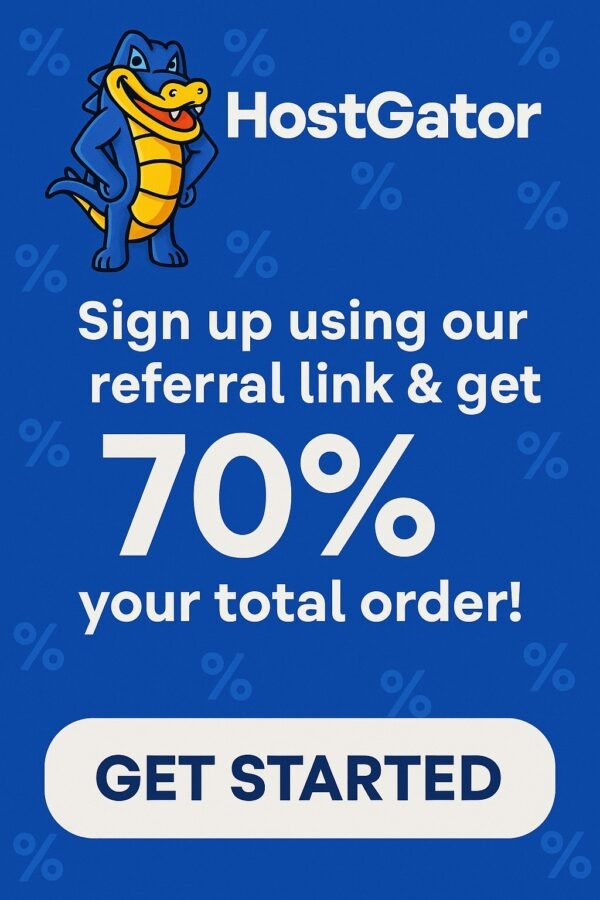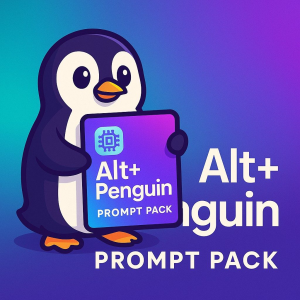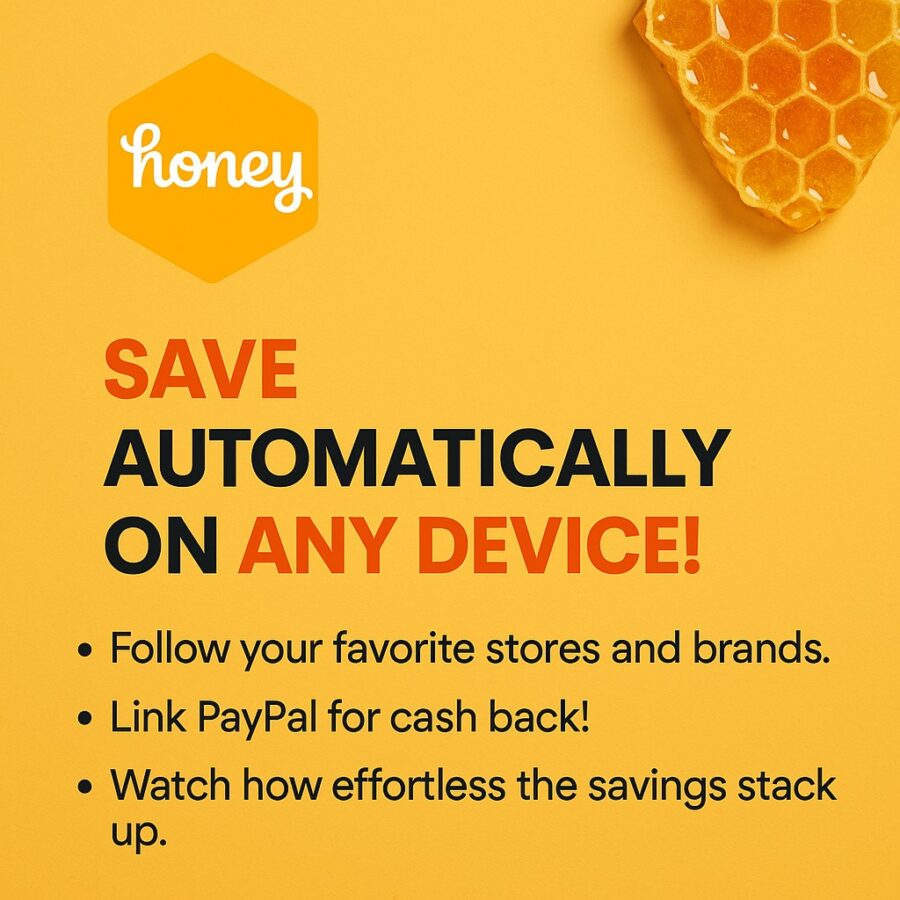Views: 1
You know that moment when your phone buzzes with a deposit while you are doing absolutely nothing? That is not luck. That is architecture.
This guide shows you how to Automate Your Income with practical ChatGPT prompts for building passive revenue streams that you can copy, paste, and run today.
The tone is friendly. The steps are specific. The goal is simple. Build small systems that compound while you live your life.
Why Automate Your Income beats trying to hustle forever
Hustle is a sprint. Automation is a marathon with water stations. When you Automate Your Income, you turn messy tasks into repeatable sequences. You document once and reuse. You ship a digital product once and sell it a thousand times. You answer a question once and point every future customer to the same helpful resource. The work changes from reactive to designed.
Automation also protects attention. Instead of switching between content, invoices, and customer emails, you set rules. Prompts capture your know-how. Tools run your handoffs. Your calendar gets lighter while your footprint grows.
What “passive” really means for passive revenue streams
Passive is not zero effort. Passive is front-loaded effort with back-end leverage. Think of it as building a vending machine. You stock it with quality goods. You choose a busy hallway. You set a price. Then you restock on a schedule. Your version of that vending machine can be a digital planner, an audio pack, a mini course, a template bundle, or a library of niche guides. When you Automate Your Income, you spend more time choosing hallways and less time chasing people.
The five pillars of passive revenue design
- A clear problem that buyers already pay to solve
- A product that delivers a fast, visible win
- A distribution loop that never sleeps
- Automation that handles intake, delivery, and support
- Metrics that guide small, steady improvements
You will use ChatGPT to speed up each pillar. The prompts below are written to generate clean outputs and reduce busywork. Keep your numbers rounded. Protect your private data. You only need categories and patterns, not bank logins.
The fast lane: a 30-day map to Automate Your Income
- Week 1: Validate a niche and pick one product type
- Week 2: Draft the product, write the sales page, and set pricing
- Week 3: Launch with a lead magnet and a five-email welcome path
- Week 4: Automate delivery, support, and weekly content
You will find a full set of ChatGPT prompts for building passive revenue streams across all four weeks. Use them as-is, then tailor brackets to your situation.
The Passive Revenue Ladder
Start near the bottom if you want quick wins. Climb as your systems get stronger.
- Printables and templates
- Micro guides and swipe files
- Audio packs and photo bundles
- Mini courses and workshops
- Memberships and toolkits
- Light SaaS or spreadsheets-as-systems
Each rung can support Automate Your Income tactics. The difference is scope and maintenance. Choose the rung that fits your time and skills right now.
Stage 1: Niche validation with real signals
You want buyers who already spend. You want problems with obvious relief. You want small communities you can reach without ads. These prompts surface that reality.
Niche scorecard prompt
Prompt: Create a niche scorecard with five criteria scored 1 to 5: buyer urgency, ongoing spending, reachable communities, search volume hints, and repeatable outcomes. Ideas: [list 5 to 8]. Return a table sorted by total score and write a 120-word snapshot for the top two niches describing the buyer, the main pain, and the fast win they want.
Competitor quick-scan prompt
Prompt: Do a competitor quick-scan for the niche [niche]. List five digital products for sale, their formats, estimated prices, and the core promise. Note one gap I can fill with a smaller or faster outcome. Keep to 150 words.
Buyer language mining prompt
Prompt: From these snippets of buyer complaints and comments, extract exact phrases and turn them into problem statements and outcomes. Snippets: [paste 10 to 15 short quotes]. Output two lists: “Problems in their words” and “Outcomes they want,” each with five bullets.
Stage 2: Offer design that is simple and specific
Strong offers promise a single result on a short timeline. They look obvious. They read fast. They reduce risk. Use these prompts to frame your value.
One-line promise prompt
Prompt: Write ten one-line promises for my product that each follow this pattern: “Get [specific result] in [time window] without [common hassle].” Niche: [niche]. Product type: [type]. Return the top three with a one-sentence rationale.
Three-tier pricing table prompt
Prompt: Draft a three-tier pricing table for
. Starter includes the essential result. Pro adds speed or volume. VIP adds personal guidance. For each, give a title, a one-sentence promise, bullet points of what is included, delivery time, and a simple guarantee.Risk reversal prompt
Prompt: Write three friendly guarantee lines for
that reduce risk without overpromising. Keep each to two sentences and avoid legal jargon.Stage 3: Automate Your Income with product blueprints
Pick one product type. Use the matching prompt set to move from outline to delivery fast.
Templates and printables
These are fast to build and easy to iterate. Planners, trackers, checklists, and swipe files all fit.
Prompt: Build a 20-page template pack outline for [use case]. Include a contents list and a short usage note for each page. Aim for quick, visible wins in the first five pages.
Prompt: Write editable microcopy for each section of the template pack so users know what to type. Keep fields short and plain.
Prompt: Generate a product description for a marketplace listing. Include a scannable features list, three benefits, and a who-it-is-for section.
Micro guides and swipe files
Teach one process well in under an hour of reading.
Prompt: Create a 10-section micro guide outline for [topic]. Each section should have a 2-minute lesson, a checklist, and an example. Add a one-page summary at the end.
Prompt: Write a swipe file with 25 fill-in-the-blank sentences for [use case]. Group by scenario and include a usage tip for each group.
Audio packs and loops
Sound sells to creators, podcasters, and wellness audiences.
Prompt: Design a 60-minute audio pack plan for [theme]. Split into tracks with lengths, moods, and use cases. Include a naming scheme and a short license summary in plain English.
Prompt: Write product page copy that explains what is inside the audio pack, who benefits, and how to credit the creator when required.
Photo bundles and stock sets
Niche stock sells when the subject is specific and the style is consistent.
Prompt: Outline a 100-photo bundle shot list for [niche theme]. Group into ten scenes with ten variations each. List props, backgrounds, and lighting notes.
Prompt: Write alt text templates for ten sample photos that improve accessibility and search. Keep to 120 characters each.
Mini courses and workshops
Short, outcome-focused, and practical.
Prompt: Draft a 60-minute mini course with six lessons for [result]. Provide lesson titles, learning goals, practical exercises, and a final quick assessment.
Prompt: Write a course sales page section that shows “before and after” states using three short vignettes.
Memberships and toolkits
Recurring value that compounds.
Prompt: Design a lightweight membership for [audience]. Include a monthly theme, two deliverables per month, office hours cadence, and a simple community guideline set. Keep it under 200 words.
Prompt: Create a 90-day onboarding plan for new members. Include the first login checklist, a seven-day quick win, and monthly milestone badges with names.
Stage 4: Sales pages that convert without hype
Clear beats clever. Your sales page should read like a friendly walkthrough.
Sales page skeleton prompt
Prompt: Turn this product outline into a 900-word sales page. Use a headline that states the outcome, three bullets that promise benefits, a short story that mirrors the buyer’s pain, a section called “What you get,” a simple pricing table, three FAQs, and a final invitation.
Social proof prompt
Prompt: Write five short testimonial prompts I can send to early buyers to capture outcomes and objections overcome. Each prompt should be one sentence.
Objection sweep prompt
Prompt: List the top seven objections a skeptical buyer of might have. For each one, write a two-sentence response that is calm and factual.
Stage 5: Search-first content for passive revenue streams
Use content to draw people in while you sleep. Aim for topics with intent. Teach something useful. Invite to a next step.
SEO topic map prompt
Prompt: Create a topic map for [niche] with three pillars and five cluster posts per pillar. Each title should include a search-friendly phrase and a clear payoff. Add a suggested call to action for each post that ties to my product.
Outline prompt for pillar content
Prompt: Outline a 1,800-word guide on [pillar topic]. Sections should be short, include numbered steps, and end with a checklist. Suggest two internal links and one external reference.
Snippet expansion prompt
Prompt: From this guide, produce five social snippets and two email teasers. Each snippet should have a hook, a tip, and a soft invitation to learn more.
Stage 6: Email that educates and sells
Email is your backstage. It builds trust and nudges action.
Lead magnet prompt
Prompt: Draft a one-page lead magnet that delivers a fast win related to . Include a title, a three-step checklist, a mini example, and a one-line bridge to the paid product.
Five-email welcome path prompt
Prompt: Write a five-email welcome series for new subscribers from the lead magnet. Email 1 delivers the asset. Emails 2 to 4 teach one tip each and show a tiny success story. Email 5 invites the first purchase with a friendly guarantee. Keep each email under 180 words.
Launch reminder prompt
Prompt: Create three short reminder emails for a limited-time bonus. One is informative, one is a case study, and one is a last call. Keep the tone helpful and calm.
Stage 7: Distribution that feels natural
Pick one primary platform and one secondary. Post consistently. Invite conversations. Drive readers to your lead magnet or sales page.
Weekly content rhythm prompt
Prompt: Plan a four-week content rhythm for [platform]. Each week has one long post, two mid posts, and five micro tips tied to . End each item with a call to action to the lead magnet.
Community engagement prompt
Prompt: Write ten authentic reply templates for common questions in [community or forum]. Each reply gives a helpful tip and ends with a light invitation to grab the free resource.
Stage 8: Automate Your Income with workflows and handoffs
Delivery and support should not chew time. Use smart handoffs. Keep humans where empathy matters.
Zap-style automation planning prompt
Prompt: Design a no-code automation for post-purchase delivery of . Trigger: successful payment. Steps: add to email list, tag purchase, send welcome email with link, log in a sheet, schedule 14-day check-in. Include fallback steps for failure and a daily summary.
Support knowledge base prompt
Prompt: Write five knowledge base entries for . Each entry has a title, a short answer, one tip, one warning, and a link to either a tutorial or a contact form.
Upgrade path prompt
Prompt: Create three upgrade offers that extend the value of . For each, write the one-line promise, the ideal moment to offer it, and a friendly sentence that presents it without pressure.
Stage 9: Pricing, math, and breakeven
Pricing is a lever. It communicates value and shapes behavior. Use math that keeps you calm.
Breakeven and revenue plan prompt
Prompt: Given these price points and target monthly revenue, calculate unit goals and a simple path to reach them. Prices: Starter [$X], Pro [$Y], VIP [$Z]. Revenue target [$T]. Suggest a mix of sales by tier and three experiments that could move the numbers.
Promotion calendar prompt
Prompt: Create a quarterly promotion calendar with four themed events. For each event, list the angle, the free teaching piece, the bonus, and the segment to target. Keep the plan concise.
Stage 10: Analytics that fit on one page
Track a few numbers weekly. Make one small change at a time. Let the loop run.
One-page dashboard prompt
Prompt: Build a one-page metric tracker with definitions and simple targets. Include visitors, lead magnet sign-ups, email open rate, sales by tier, upgrade rate, and refunds. Add a one-sentence action rule for each metric if the target is missed.
A or B test prompt
Prompt: Propose three A or B tests for my sales page. One test per section: headline, offer stack, and guarantee. For each test, write a hypothesis and a success metric.
Stage 11: Legal, ethics, and buyer trust
Trust compounds faster than traffic. Promise clearly. Deliver fully. Respect privacy.
Plain-language policy prompt
Prompt: Write a 120-word customer-friendly policy that covers refunds, data privacy, and fair use for . Keep the tone respectful and clear.
Accessibility prompt
Prompt: Give me a five-item accessibility checklist for digital products like [type]. Include alt text, captioning, color contrast, text size, and keyboard navigation tips.
Stage 12: Three case studies to model
These are fictionalized composites that mirror common paths. The numbers are realistic examples, not promises.
Case study A: Printables that pay a car payment
A teacher builds a classroom planner pack in a weekend. She prices Starter at a friendly number, adds a Pro pack with extra templates, and offers a VIP custom layout. The launch uses a one-page lead magnet that shows a weekly schedule grid with a color legend. A five-email series teaches short setup wins. Delivery is automated with a payment link connected to a file vault and an onboarding note. In three months she sells hundreds of Starter packs, dozens of Pro packs, and a handful of VIP customs that she batches on two Saturdays. Support drops after she publishes five knowledge base answers. Her monthly total covers a car payment and a chunk of groceries. She continues to Automate Your Income by scheduling monthly refresh pages that buyers love.
Case study B: Audio that helps creators finish projects
A musician records a focused library of ambient loops and short stings. He names each track with a mood and a use case. The sales page includes a 60-second sampler and a plain-English license summary. He posts behind-the-scenes clips that show his recording process. Buyers are podcasters and small video teams. He later adds a workshop on mixing with the loops. The upgrade is presented on the thank you page and in a 14-day check-in. A few studios license a bundle for team use. Passive revenue streams multiply from one library, a workshop, and a license pack. Support is minimal because the knowledge base is clear.
Case study C: Micro course that prints time for small shops
A bakery owner builds a 60-minute mini course that teaches a simple daily schedule for social posts and local promos. The course includes schedules, prompts, and a reusable calendar template. The lead magnet is a one-page “Seven Day Local Buzz Plan.” The email path features success screenshots from early testers. The bakery owner schedules office hours twice a month for Pro tier buyers. She gets speaking invites from local groups and sells course seats after each talk. She keeps automations light and reliable. The system continues to Automate Your Income while she bakes.
Stage 13: Automate Your Income with cross-platform reuse
Work once. Publish everywhere with minimal extra effort. Repurpose smartly.
Repurpose prompt
Prompt: Turn this 1,200-word article into a content stack. Outputs: a 6-slide carousel outline, a 60-second video script, a 10-tweet thread, three email teasers, and a short checklist PDF. Keep the message consistent and end each item with a friendly call to action.
Asset library prompt
Prompt: Create a file naming convention and folder structure for my digital products and marketing materials. Include folders for product files, images, audio, social clips, emails, and analytics exports. Provide an example tree and a short naming key.
Stage 14: Customer success that scales
The best marketing is a happy buyer who returns. Build a simple loop for success stories.
Success capture prompt
Prompt: Write a three-question progress check for buyers of . Ask about one win, one obstacle, and one wish for improvement. Offer a small thank you and ask permission to quote them with first name only.
Case study builder prompt
Prompt: Turn this progress check reply into a 150-word case study with a headline, the problem, the fix, and the result. Keep the voice human and direct.
Stage 15: Tiny habits for long-term momentum
Automation runs best on routines. Keep it light. Keep it repeatable.
- Weekly: one content anchor, five micro tips, support session
- Biweekly: office hours or Q and A
- Monthly: product refresh or bonus, metric review, small test
- Quarterly: promotion, new lead magnet, update the sales page
Routine prompt
Prompt: Create a four-part monthly routine checklist for my passive revenue business. Parts: content, product, support, and metrics. Keep each part to five tasks that fit into two focused work blocks per week.
Stage 16: Troubleshooting the usual bumps
Every system hiccups. Fixes should be calm and fast.
- No sign-ups: check the lead magnet promise and the form friction
- Low opens: rewrite subject lines and shorten emails
- Clicks but no buys: clarify the offer stack and the guarantee
- Refunds: improve setup guidance and set realistic expectations
- Too many questions: expand the knowledge base and add a quick start video
Diagnostic prompt
Prompt: Run a five-question diagnostic on my funnel. For each no, give one fix I can do in under one hour. Questions should cover message clarity, lead magnet alignment, proof, checkout friction, and post-purchase guidance.
Stage 17: Ethics that build durable reputation
Good systems respect buyers. They do not trick. They do not exaggerate. They tell the truth and fix mistakes. Your brand becomes a promise people can trust.
Ethics checklist prompt
Prompt: Produce a 10-item ethics checklist for selling digital products. Include accuracy, privacy, refund clarity, accessibility, honest timelines, and respectful marketing. Write in plain English.
Stage 18: The Automate Your Income blueprint in one page
Here is your pocket map. Tape it above your desk.
- Pick a niche with money in motion and reachable pockets
- Promise one specific result in a short time
- Ship a small product that delivers a visible win
- Write a sales page that reads like a tour, not a pitch
- Launch with a lead magnet and a five-email path
- Post weekly helpful content that points to your free asset
- Automate delivery, tagging, and a 14-day check-in
- Track a few numbers and test one thing at a time
- Publish knowledge base answers to shrink support
- Capture wins and turn them into case studies
Stage 19: Quick-start kits for four audiences
Pick the kit that matches your skills. You can launch in a weekend.
Creator kit: template shop
- Product: carousel templates, script outlines, and caption starters
- Lead magnet: ten hooks that fit any niche
- Offer stack: Starter pack, Pro pack, VIP setup call
- Automation: instant delivery, tag, 14-day check-in
- Metric focus: conversion from lead magnet to Starter
Prompt: Generate a 20-item template pack table of contents for creators on [platform]. Group by goal and list the result each template helps achieve.
Local business kit: promo calendar
- Product: 12-month promo calendar with weekly post ideas
- Lead magnet: seven-day local buzz plan
- Offer stack: calendar, photo prompt pack, copy swipe file
- Automation: time-based email tips that match the calendar
- Metric focus: upgrades from calendar to bundle
Prompt: Create a 12-month local promotion calendar for [business type]. For each month, give a theme, two post ideas, one community tie-in, and a small offer suggestion.
Knowledge worker kit: meeting saver
- Product: meeting agenda templates and async update scripts
- Lead magnet: one-page async guide
- Offer stack: template pack, onboarding mini course, team license
- Automation: team license form and shared drive access
- Metric focus: team conversions and license renewals
Prompt: Draft five meeting templates that shorten meetings by 30 percent. Include agenda, time boxes, and decision checkpoints.
Hobbyist kit: skill sampler
- Product: eight beginner projects with supply lists
- Lead magnet: three-project starter
- Offer stack: project pack, video add-on, live Q and A
- Automation: release-by-week schedule with encouragement
- Metric focus: completion rates and community posts
Prompt: Outline eight beginner-friendly projects for [hobby]. Each project should state time required, supplies, and one visible win.
Stage 20: Your next three moves
- Run the niche scorecard and pick one lane
- Draft the one-line promise and the three-tier pricing table
- Build the smallest product that delivers a fast win and set up delivery
Once you move through those three, you will have a system that starts to Automate Your Income in a real, observable way. Your role shifts from grinding to guiding. Your calendar holds more deep work and less triage. Your bank app feels calmer.
Frequently asked questions about Automate Your Income
How long until I see a sale
Some sellers see a sale within days if the niche is hot and the offer is clear. Most see momentum within a month of consistent posting and a helpful lead magnet.
Do I need a big audience
No. You need a focused audience that cares about one problem. Communities, forums, and small lists can convert well because trust runs higher.
What if I am not a designer
Use plain templates. Lean on clarity and utility. Buyers reward usefulness over flashy presentation.
How many products should I launch first
One. Prove the system. Improve the system. Then branch out.
What if support gets heavy
Publish a knowledge base and a quick start video. Offer office hours two times a month. Tag common questions and update your product to prevent them.
Closing thoughts on Automate Your Income
You do not need permission to ship. You need a small loop that you can run on repeat. With the prompts in this guide, you have everything you need to design, launch, and refine.
Start with a niche that already buys. Promise a small, real result. Make it simple to get that result. Tell people about it in places they already visit. Then let your automations carry the load while you improve one piece each week.
When in doubt, return to the core idea. Automate Your Income by choosing systems over spurts, rules over moods, and helpful service over hype. Your future self will be grateful that you built a business that deposits while you sleep, cook, coach a game, or finally take a weekend that feels like a weekend.





